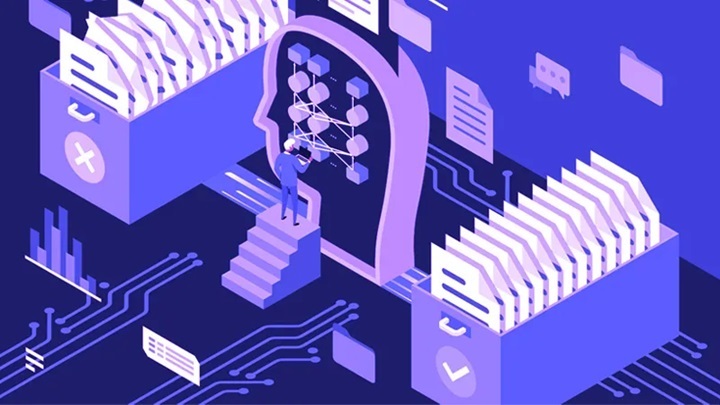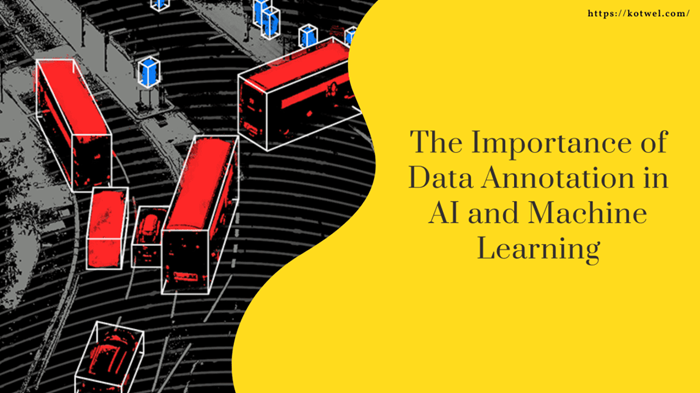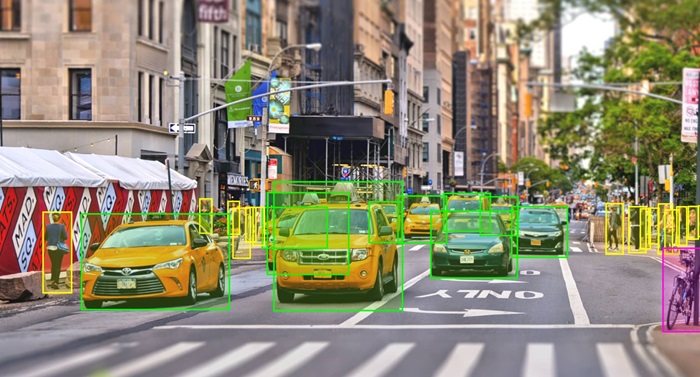Data annotation has become an essential component of machine learning and artificial intelligence, providing the necessary training data for algorithms to learn from. As industries increasingly rely on AI to drive innovation and efficiency, the demand for accurate and efficient data annotation tools has surged. This article delves into the world of data annotation technology, providing an in-depth review of popular tools, key trends, and best practices in the field.
What is Data Annotation?
Data annotation refers to the process of labeling data so that machines can understand it. This can involve tagging images, transcribing audio, or categorizing text. The annotated data helps machine learning models learn to recognize patterns, make predictions, and automate tasks. Here are some key aspects of data annotation:
- Purpose: The primary goal is to create high-quality datasets for training AI models.
- Types of Data: Data can include images, videos, audio, text, and more.
- Techniques: Annotation can be performed manually or with the help of automated tools.
Why is Data Annotation Important?
Data annotation is crucial for several reasons:
- Machine Learning Performance: High-quality annotated data significantly improves the performance of machine learning models.
- Domain-Specific Applications: Different industries require specific types of data annotation, from healthcare to automotive.
- Training for Deep Learning: Complex models like neural networks need large datasets to learn effectively.
Key Trends in Data Annotation Technology
The landscape of data annotation technology is rapidly evolving. Here are some of the most significant trends shaping the industry:
1. Automation and AI-Assisted Annotation
Automation is a game-changer in the data annotation process. AI-assisted tools can help speed up the annotation workflow by suggesting labels based on existing data. This not only saves time but also reduces human error.
2. Crowd Annotation
Crowdsourcing is becoming increasingly popular in data annotation. Platforms allow companies to tap into a global workforce to annotate large datasets. This approach can be cost-effective and efficient, especially for projects requiring vast amounts of data.
3. Quality Control Mechanisms
As the demand for annotated data grows, so does the need for quality control. Tools are being developed to ensure high accuracy in annotations, such as validation workflows, double-checking by multiple annotators, and automated quality checks.
4. Integration with Machine Learning Frameworks
Many annotation tools are now designed to integrate seamlessly with popular machine learning frameworks like TensorFlow and PyTorch. This streamlines the process from data collection to model training.
5. Real-time Collaboration
With remote work becoming more prevalent, data annotation tools are incorporating features that allow for real-time collaboration among teams. This facilitates faster feedback and enhances productivity.
Popular Data Annotation Tools Reviewed
With numerous data annotation tools available on the market, it can be challenging to choose the right one. Here’s a review of some of the most popular data annotation platforms, highlighting their features, strengths, and weaknesses.
1. Labelbox
Overview
Labelbox is a comprehensive data annotation platform designed for enterprise-level projects. It offers a user-friendly interface, extensive collaboration features, and robust API integration.
Key Features
- Custom Workflows: Users can create tailored workflows to fit their project needs.
- Collaboration Tools: Teams can work together in real time, making it easy to share feedback and revisions.
- Quality Management: Built-in quality assurance features help maintain high annotation standards.
Pros and Cons
- Pros:
- Intuitive user interface.
- Strong collaboration capabilities.
- Excellent customer support.
- Cons:
- Can be expensive for small teams.
- Learning curve for advanced features.
2. Amazon SageMaker Ground Truth
Overview
Amazon SageMaker Ground Truth is a fully managed data labeling service that uses machine learning to automate the labeling process. It is part of the Amazon Web Services (AWS) ecosystem, making it a good fit for users already utilizing AWS.
Key Features
- Machine Learning Integration: Automates labeling based on previous annotations.
- Crowdsourcing: Connects users with a global pool of workers for annotation tasks.
- Detailed Reporting: Provides insights into the annotation process and data quality.
Pros and Cons
- Pros:
- Scalable and cost-effective for large datasets.
- Seamless integration with other AWS services.
- Cons:
- Requires AWS knowledge to set up and manage effectively.
- Can be complex for users unfamiliar with cloud services.
3. Snorkel
Overview
Snorkel is an open-source framework that enables users to create and manage training datasets using weak supervision. It allows users to write labeling functions that can generate noisy labels, which are then combined to create high-quality training data.
Key Features
- Weak Supervision: Combines multiple noisy labeling functions to improve label quality.
- Flexibility: Highly customizable to fit various use cases and industries.
- Integration: Can be easily integrated into existing machine learning pipelines.
Pros and Cons
- Pros:
- Open-source and free to use.
- Highly flexible for different labeling strategies.
- Cons:
- Steeper learning curve compared to commercial tools.
- Requires more technical expertise to implement effectively.
4. Supervisely
Overview
Supervisely is a powerful data annotation tool specifically designed for computer vision tasks. It supports various annotation types, including image segmentation, object detection, and classification.
Key Features
- Advanced Annotation Tools: Provides a variety of tools for detailed annotations, including polygon, bbox, and keypoint annotations.
- Project Management: Users can manage multiple projects and datasets easily.
- Pre-trained Models: Offers access to pre-trained models for quick project setup.
Pros and Cons
- Pros:
- Excellent for computer vision applications.
- User-friendly interface with many annotation options.
- Cons:
- Limited support for non-visual data types (e.g., audio, text).
- Some advanced features require a subscription.
5. VGG Image Annotator (VIA)
Overview
VGG Image Annotator (VIA) is an open-source annotation tool developed by the Visual Geometry Group at the University of Oxford. It is lightweight and easy to use, making it suitable for quick annotation tasks.
Key Features
- Simplicity: Designed for ease of use, with a straightforward interface.
- Versatile Formats: Supports various annotation types, including image segmentation and bounding boxes.
- Offline Use: Can be downloaded and used offline, which is a significant advantage for certain projects.
Pros and Cons
- Pros:
- Completely free and open-source.
- Simple setup and easy to learn.
- Cons:
- Lacks advanced features found in commercial tools.
- Limited collaboration options.
Best Practices for Data Annotation
To maximize the effectiveness of data annotation efforts, consider these best practices:
1. Define Clear Guidelines
Creating comprehensive annotation guidelines is crucial. These should outline:
- The purpose of the annotation.
- Specific labeling instructions.
- Examples of correct and incorrect annotations.
2. Invest in Training
Training annotators is essential for ensuring quality. This could involve:
- Workshops on the annotation tool being used.
- Training sessions on best practices and guidelines.
- Ongoing feedback and support.
3. Implement Quality Control Measures
Quality control is critical in data annotation. Here are some effective strategies:
- Double Annotation: Have multiple annotators label the same data, then compare results to identify discrepancies.
- Regular Audits: Periodically review a sample of annotated data to ensure adherence to guidelines.
- Feedback Loops: Provide feedback to annotators based on quality assessments.
4. Utilize Automation Wisely
While automation can significantly speed up the annotation process, it should be used judiciously. Ensure that:
- Automated tools are correctly calibrated to minimize errors.
- Human oversight is maintained to address any inaccuracies produced by automated systems.
5. Collaborate Across Teams
Data annotation often requires input from multiple stakeholders. Encourage collaboration by:
- Creating cross-functional teams with representatives from data science, product, and user experience.
- Establishing regular communication channels to share updates and insights.
Data annotation is a pivotal aspect of the AI and machine learning landscape, driving the accuracy and effectiveness of models across various industries. As technology evolves, so do the tools and practices available for data annotation. By staying informed about the latest trends, tools, and best practices, organizations can effectively harness the power of data annotation to enhance their AI initiatives.
Final Thoughts
Investing in high-quality data annotation tools and practices is not just about keeping up with the competition; it’s about unlocking the full potential of AI. With the right approach, businesses can streamline their data workflows, improve model performance, and ultimately drive better decision-making. Whether you’re just starting or looking to optimize your existing processes, understanding the data annotation landscape is essential for success in today’s data-driven world.



